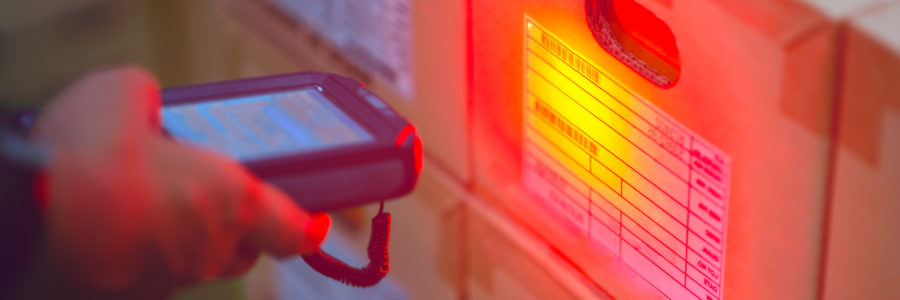If you’ve explored warehouse technology, you’ve probably heard the term RFID. RFID is often touted as one of the best ways to update your warehouse, as it helps automate inventory tracking.
Whether or not RFID is a good fit for your business depends on many factors. This article explores the benefits of RFID and the basics of how these systems work.
Benefits of RFID
RFID, or Radio Frequency Identification, was originally used to identify whether or not airplanes were friend or foe in World War II. Since then, the technology has evolved into a core component of many businesses and military applications. One of the most common applications is warehouse inventory tracking.
RFID allows you to quickly, accurately, and automatically track individual inventory pieces. When coupled with a WMS or ERP system, RFID allows you to keep accurate inventory counts and track product locations. This system may result in lower costs and higher profit for your warehouse — you don’t need to waste manpower to find misplaced product, or halt operations to do an inventory count.
How RFID Works
RFID systems can be very simple or very complex, depending on the needs of your warehouse. A basic RFID system is comprised of tags, readers, and antennas.
An RFID tag is like a label. Each tag contains an antenna, which allows it to be located by an RFID reader, and a chip, which stores information about the item. Tags are affixed to your products or inventory. They come in a wide variety of costs and materials, ranging from heavy-duty tags for outdoor applications, to cheaper tags for indoor uses.
An RFID reader is the “brain” of your RFID system. Also called an “interrogator,” an RFID reader pings the tags and reads them, allowing you to locate the tags and retrieve product information. Mobile readers can be carried around by employees, while fixed RFID readers can scan outgoing products. The cost of an RFID reader depends on its features — how far away do you need to scan? Does it need ERP integration? Is it mobile, or fixed?
Without antennas, RFID systems wouldn’t function. Antennas allow RFID readers to access information from the RFID tags.
Choosing the Right RFID System
Before you choose your RFID system, you’ll want to explore the needs of your warehouse. If inventory tracking is a constant issue, an RFID system can help eliminate that issue. Still, adding an RFID system into your warehouse requires some investment in the equipment, employee training, and potentially software integration.
Need help making RFID work for you? Let Vodigy help! Vodigy specializes in helping small businesses harness the power of technology. Call us today!




